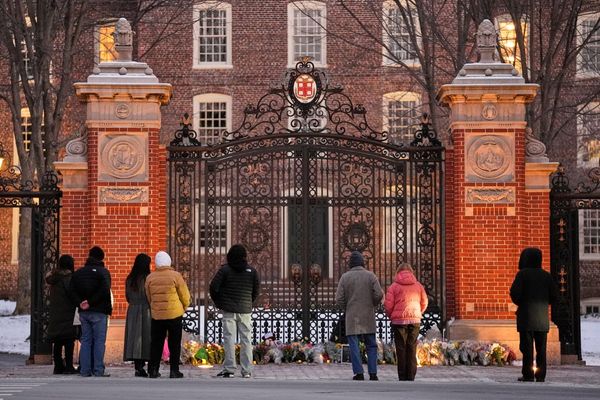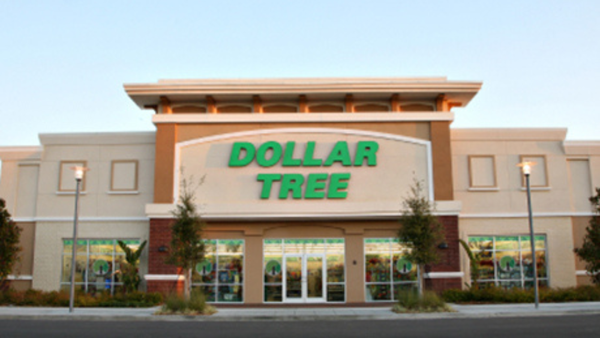
Critics of Australia’s Aukus submarine deal say the government has given itself the power to nominate any place in Australia as a potential nuclear waste dump, without proper consultation with communities and Indigenous landowners.
Australia has agreed to take sole responsibility for the management, security and storage of all nuclear waste from its fleet of proposed nuclear-powered submarines, including the spent fuel from the submarines’ reactors – high-level nuclear waste that will be radioactive for millennia once the submarines are decommissioned from the early 2050s.
The spent fuel is also a nonproliferation risk: Australia’s nuclear submarines will run on highly enriched uranium which can be reprocessed to make nuclear weapons.
The spent fuel will require military-grade security to safeguard it. Other navies use low enriched uranium, which cannot be used in a warhead, to power their submarines, but requires refuelling every few years.
A spokesperson for the Australian Submarine Agency said the government was “committed to the highest levels of nuclear stewardship, including the safe and secure disposal of waste”, and that the “selection of any designated zone for high-level waste will be informed by extensive consultation with the community and key stakeholders”.
Sign up: AU Breaking News email
But critics argue the Australian naval nuclear power safety bill 2024, passed in October last year, is far more broadly drawn, allowing the government to “pick any place on a map, then the next day make a nuclear waste dump there”.
The Greens defence spokesperson, senator David Shoebridge, said Aukus was a “slow-motion disaster” that would leave Australia with a toxic legacy for millennia.
He said the legislation, as passed, failed to protect the rights of communities.
“This law allows the minister to pick any place on a map, then the next day make a nuclear waste dump there. It sounds impossible, but the way the law is written could make your neighbourhood, or the defence facility next door, a nuclear waste dump almost overnight.
“The second this law passed, Perth and Adelaide became home to two nuclear waste dumps. The local community was not informed, they were not consulted, and they are not being told what is happening now.”
Shoebridge said the government, instead of learning the lessons of previous failed attempts to build a national nuclear waste facility, had “decided the best course of action was to make sure the public, First Nations people, and environmental groups had no way to protect the land”.
The legislation, as passed, designates HMAS Stirling off Perth and the Osborne naval shipyard in Adelaide as “designated zones” for nuclear activities, including storage of radioactive waste: low- and intermediate-level nuclear waste from Australia, UK and US submarines will be stored there.
But the legislation also grants the government the power to establish “any other area in Australia that is prescribed by the regulations to be a designated zone”.
Draft regulations, circulated by the government, state the government regulator must be satisfied “that meaningful consultation has been undertaken” with communities, Indigenous landowners and the wider public, over a proposed nuclear waste facility.
But the legislated new Australian Naval Nuclear Power Safety Regulator will sit within defence, answerable to the defence minister, raising concerns over the independence of the proposed new body.
The law was amended last year to prohibit the US and UK dumping high-level radioactive material – such as spent fuel or irradiated nuclear reactors – in Australia. But both countries will dispose of low- and intermediate-level nuclear waste from their nuclear submarines in Australia.
Former South Australian senator Rex Patrick, an ex-submariner and Aukus critic, is currently waging a freedom of information battle in the federal court to get access to a November 2023 defence department report – examining potential sites for a nuclear waste site – but to which he has been refused access.
Patrick said his opposition to Aukus was related to the project’s cost – at last estimate $368bn – and the increasing risk it would fail, and leave without the Australia the naval defences it required.
“But I also am frustrated by the fact that they haven’t costed this thing out from cradle to grave. The $368bn that has been allocated to this project does not include the nuclear waste storage and disposal, and there has been no attempt to explain to the Australian people how this is going to work.”
Patrick said the secrecy surrounding the Aukus details, and the lack of parliamentary and public discussion around the agreement, meant that critical details were being kept from the Australian people, undermining public confidence and the project’s social licence.
“The government has had a roadmap for Aukus for a long time … they are just not telling the Australian public. I’m not asking for the secret makeup of the fuel inside a nuclear-powered submarine … I’m simply saying, ‘How are they going to dispose of this radioactive nuclear material?’ But all of this has been wrapped in secrecy.”
Australia currently stores low- and intermediate-level waste from medical, laboratory and research use: but there is no permanent storage facility.
Successive Australian governments have wrestled with how and where to dispose of nuclear waste for nearly three decades without finding a permanent solution.
Since 1998, governments have proposed three separate sites – Woomera and Kimba in South Australia, and Muckaty Station in the Northern Territory. In each case, fierce opposition from local communities and Indigenous landowners saw the proposal rejected and abandoned.
Defence officials told parliament in 2020 that an evaluation of four possible sites on defence land found none were suitable.
“The defence assessment determined that the siting of the National Radioactive Waste Management Facility at any of the four sites identified in the request could not be achieved,” officials said in evidence to the Senate.
As far back as 2004, released cabinet documents show, the Howard government noted “there is a pressing need to make progress on establishing a radioactive waste management facility”. Cabinet agreed to make “field assessments [of] Christmas Island, as the preferred location, and two onshore locations (Pine Gap and Tindal Royal Australian air force base and related locations in the Northern Territory, with a preference for the related locations). The “related locations” were not specified.
In March 2023, the defence minister, Richard Marles, said the nuclear reactors from decommissioned nuclear submarines would be stored on “defence land, current or future”, raising the prospect that a site could be identified and then declared “defence land”.
Marles said “we will, within the next 12 months, establish a process” for identifying a nuclear waste storage site that would be “remote from populations”. That process has not yet been established.
A spokesperson for the Australian Submarine Agency said the disposal of high-level radioactive waste would not be required until the 2050s, when Australia’s first nuclear-powered submarine is expected to be decommissioned.
“Selection of any designated zone for high-level waste will be informed by extensive consultation with the community and key stakeholders.
“Intermediate and high-level waste, including spent nuclear fuel, will be stored and disposed on the current or future defence estate.”
There is currently no permanent storage facility anywhere in the world for permanent high-level nuclear waste storage. The US and UK, which have run nuclear submarines for decades, have still not built permanent storage facilities. Finland has spent more than 40 years and more than €1bn building a 100,000-year underground storage facility which is currently undergoing trials.







